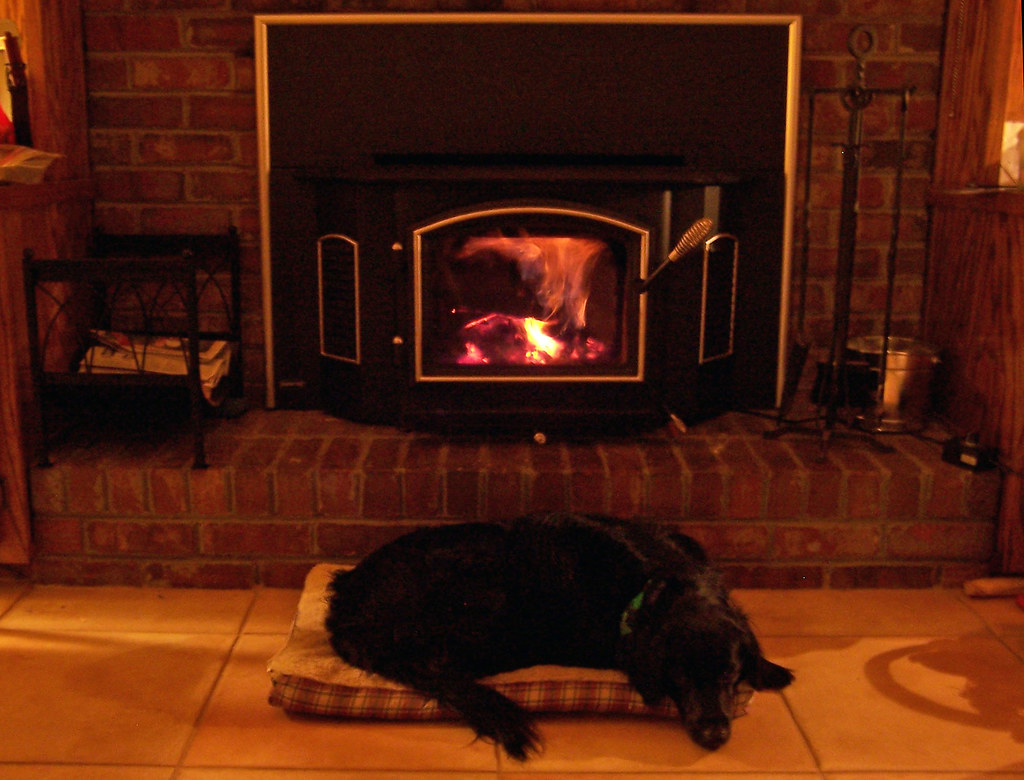Wood burning stoves are not just purely for aesthetics and character. They serve a clear purpose – to heat the home. But when the nights are long, especially during the winter months, how do you keep a wood stove burning all night?
Put simply, you need suitable wood, the correct set-up, air vents, and the normal safety precautions to keep a wood stove burning all night.
Let’s take a detailed look at exactly what you need to do.
Table of Contents
How to Keep a Wood Stove Burning all Night
Select the Best Wood
Now that we’ve established some of the benefits, let’s look at how we can achieve that warm glow throughout the night.
First off, you need to pick the best kind of wood available to you.
Some people think that all wood is the same but this couldn’t be further from the truth. Some woods are softer, harder, wetter, drier, etc., than others.
When it comes to finding the perfect wood for your stove, the two most important factors are hardness and dryness. Pick the driest wood possible. If your chosen wood has more than 20% water content, your fire will spend too much energy evaporating the water and leave less for you to heat your home. Wet wood can also create dangerous unwanted smoke, depending on what you burn.
It should also be hard. Softwood can be fantastic at getting a fire started (which is why it’s regularly used for kindling sticks etc.) but only hardwood can keep a fire burning over long periods of time. This is why you regularly see people build fires with kindling and softer woods, before gradually adding dry, hard, dense logs to act as the longterm fuel of the fire.
Some of the best kinds of wood to use include Beech, Hawthorn, Rowan, Yew, and Oak2.
Set Up your Stove Correctly
Now that you’ve got your wood, it’s time to set it up as best possible.
Correct set up is vital. With a poor set up, you might get a powerful looking fire, but it will lack the longevity we need for it to burn throughout the night.
First, remove the majority of the old ash from previous fires. It’s good to leave about ½ an inch to create insulation for the new fire, but any more than that and it won’t be efficient as new energy will be sucked into heating piles of ash.
Next, it’s time to load the logs. When you first light your fire, use small, softer logs, but don’t pack them too tightly4. They need oxygen to get that fire going and aeration is key to any successful fire.
Surround these logs with kindling, and add some paper. Paper is excellent because it sets alight very quickly and should act as an accelerant for everything else. Once the paper is going, the kindling should follow, and then the small logs. Then, it’s time to add the hardwood. This will be your primary energy source and you can add these bigger logs at various stages of the night, or right before you head to bed as long as the fire is still powerful.
Once you get a good fire going, close the door. Some people think an open door will mean more heat spreads throughout the room but this is incorrect. Stoves are designed to radiate heat with the door closed and it’s an important safety feature not to be ignored.
Ps. If you happen to use a multi-fuel stove then feel free to add some coals3, making sure they’re laid out tidily. Coals are excellent at absorbing heat and emitting that heat out into a room over a long period of time.
Use Air Vents to your Advantage
These days, most modern stoves come equipped with air vents.
If you remember back to your school days, you’ll know that fuel and oxygen are the two things that every fire needs. Everything else is secondary and in this case the fuel is the wood, kindling and paper you’ve just added to your stove. Naturally, the oxygen supply will come from the air via the air vents within the stove.
If the air vents are shut, the fire will be deprived of oxygen and die. Because of this it’s common for many stove owners to think that means you should keep air vents completely open.
This isn’t completely true as too much oxygen means that the wood will burn up too quickly and won’t last all night5.
It might seem strange, but finding a balance is key and the best thing to do is to keep the air vents slightly open, but not completely. You should aim for a gentle flame that sustains for as long as possible.
Stay Safe
When it comes to wood burning stoves, we can’t stress enough how important safety is.
Did you know that stoves cause 4000 fires a year6?
If you have a stove, it’s your responsibility to ensure it’s safe. This can be easily done if you follow the correct protocol, maintain your stove as best possible and always respect fire.
First of all, always make sure that your stove door is closed when you aren’t tending to your fire. It’s unlikely, but flames can jump and move in unpredictable ways and by leaving a stove door open, you can take an unnecessary risk.
Next, ensure that nothing flammable is left near the stove. This includes paper, aerosols, clothing, building materials, electric gadgets or appliances etc. Even if they don’t touch the flame, the heat alone could be enough to ignite them.
Finally, as we always like to say, make sure your stove is clean and well maintained. A dirty stove is more likely to smoke, emitting dangerous gasses into the air.
Benefits of Keeping a Stove Burning all Night
For some people, a wood burning stove is nothing more than something that looks nice and keeps you warm whilst you’re in that specific room.
But for some people, no stove would mean no heat. Period. And as you can imagine, that isn’t going to be very pleasant during particularly cold spells, long nights or harsh winters.
In some parts of the USA, 30% of homes are heated with wood1. When these areas experience a temperature drop, it’s essential that residents can keep their stoves on overnight.
Not only is living in a cold house unpleasant, but it can even be dangerous! At an extreme level, you could potentially catch hypothermia if your body falls below a specific temperature, but even at a basic level people experience stress (both physically and mentally) if they lack the means to warm themselves properly.
Therefore, ensuring a certain level of heat in the home, and keeping a stove ticking over throughout the night can have major benefits.
–
To finish, remember that in this case you’re not trying to build large roaring flame. That might be perfect when you have friends over or simply want to enjoy a short blast of heat before you leave the house, but large powerful flames will quickly burn out unless managed and sustained (and we doubt you’ll be doing that if you’re sleeping!).
The aim here is to create a small, gentle flame that burns for as long as possible.
We hope this helps! For everything else home heating, stick with CosyWarmer.com

